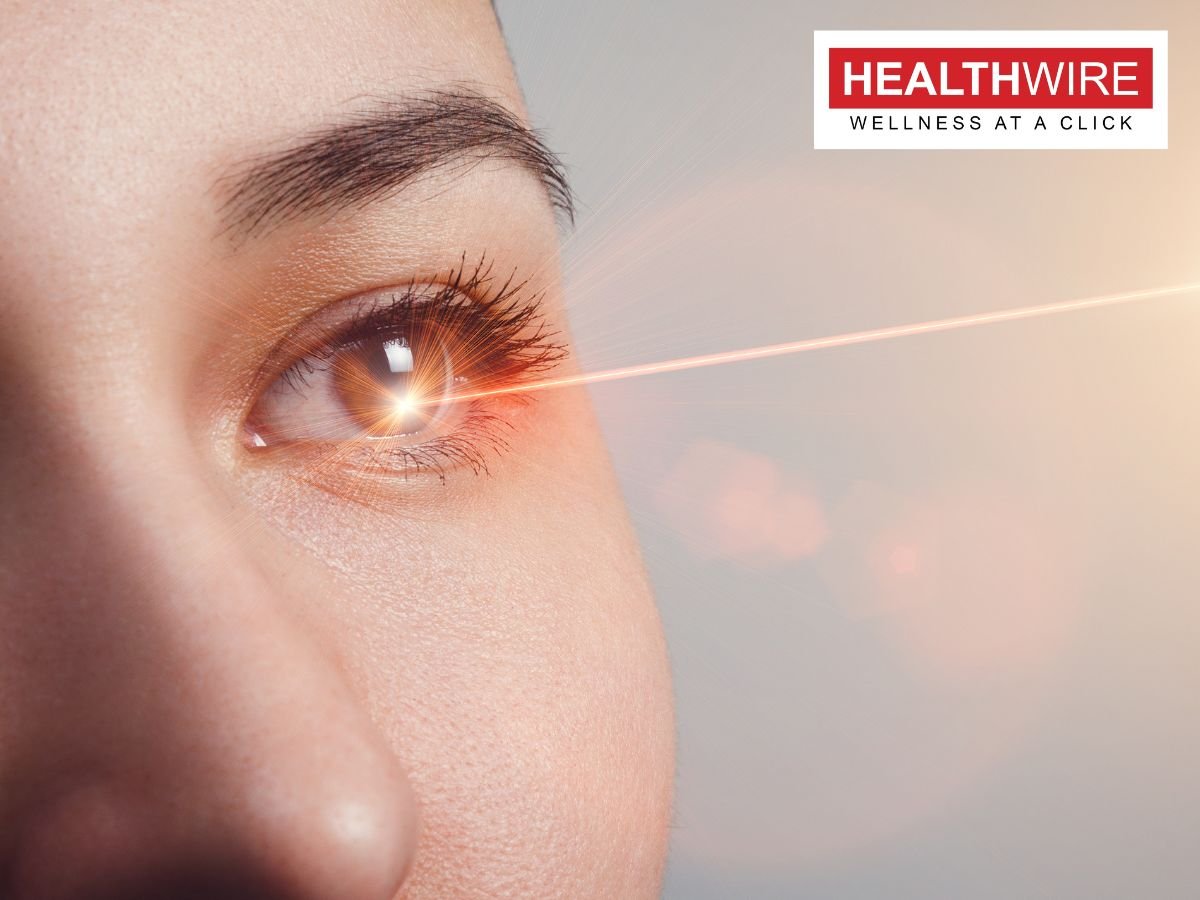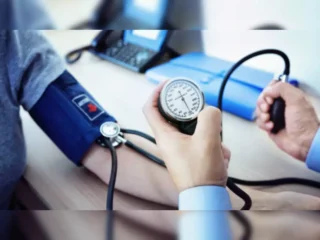New Delhi, 04 October, 2025: Every year, World Sight Day is observed on the second Thursday of October — and in 2025, it will fall on October 9. This global initiative, coordinated by the International Agency for the Prevention of Blindness (IAPB), aims to raise awareness about visual impairment and blindness. It is also a reminder that most causes of blindness are preventable or treatable when detected early.
Eye health is one of the most neglected aspects of overall well-being. People often ignore subtle changes in their vision until symptoms become severe. However, early detection is crucial — not only to maintain eyesight but also to detect underlying conditions like diabetes, hypertension, or autoimmune diseases that can affect the eyes.
This World Sight Day 2025, experts emphasize the need for regular eye checkups and awareness about early warning signs. Below are five everyday symptoms that you should never ignore, as they might indicate more serious eye or health issues.
1. Blurred Vision or Difficulty Focusing
Blurred or cloudy vision is one of the earliest and most common signs of an eye problem. While sometimes it’s a simple issue like needing new glasses, persistent or sudden blurriness can indicate deeper health concerns.
Possible Causes:
- Refractive errors such as nearsightedness (myopia), farsightedness (hyperopia), or astigmatism.
- Cataracts, which cloud the eye’s lens and cause progressive vision loss.
- Glaucoma, a group of eye conditions that damage the optic nerve and can lead to blindness if untreated.
- Diabetes-related changes, especially diabetic retinopathy, which affects the retina due to high blood sugar.
- Digital eye strain, caused by prolonged screen time and poor lighting conditions.
When to See a Doctor:
If you experience sudden blurred vision, especially in one eye, it could signal a retinal detachment, stroke, or optic nerve issue. Immediate medical attention is vital to prevent permanent damage.
2. Seeing Floaters, Flashes, or Dark Spots
Many people see small specks or “floaters” drifting across their vision occasionally. They’re usually harmless and related to normal aging changes in the vitreous gel inside the eye. However, a sudden increase in floaters or flashes of light could indicate a serious condition like a retinal tear or detachment.
Possible Causes:
- Retinal tear or detachment, which can cause sudden vision loss if not treated urgently.
- Posterior vitreous detachment, more common in people over 50.
- Ocular migraines, which can cause temporary flashes of light or blind spots.
- Bleeding in the eye, due to diabetes or hypertension.
When to See a Doctor:
If you notice new floaters, flashes, or a dark curtain-like shadow over your vision, seek emergency care from an ophthalmologist. Early intervention can prevent irreversible blindness.
3. Dry, Itchy, or Watery Eyes
Dry, irritated, or excessively watery eyes are common, especially among those who spend long hours in front of screens or in air-conditioned environments. While it may seem minor, chronic dry eye can significantly affect vision quality and comfort.
Possible Causes:
- Dry Eye Syndrome, caused by poor tear quality or low tear production.
- Allergies, leading to itching and redness.
- Prolonged screen time, which reduces blinking and dries the eyes.
- Autoimmune conditions like Sjögren’s syndrome.
- Medications such as antihistamines or antidepressants that reduce tear production.
When to See a Doctor:
If over-the-counter eye drops or lifestyle adjustments don’t relieve symptoms, consult an eye specialist. Chronic dryness can cause inflammation, corneal damage, and even infections if untreated.
4. Eye Pain, Pressure, or Headaches
Eye pain should never be ignored, especially if it is accompanied by redness, vision changes, or headaches. Pain can range from mild irritation to severe pressure inside the eye, indicating potentially serious conditions.
Possible Causes:
- Glaucoma, particularly acute angle-closure glaucoma, which can cause intense pain and vision loss.
- Uveitis, inflammation of the middle layer of the eye, often linked to autoimmune diseases.
- Optic neuritis, inflammation of the optic nerve that may cause pain when moving the eyes.
- Eye strain from long hours of reading or screen exposure.
- Sinus infections that radiate pain around the eyes.
When to See a Doctor:
Seek immediate care if you experience severe eye pain, nausea, vomiting, or sudden vision loss. These could signal glaucoma or other emergencies that require urgent treatment.
5. Redness, Swelling, or Discharge
Red or swollen eyes are often associated with tiredness or allergies, but persistent redness or discharge could be a sign of infection or inflammation. Identifying the cause early helps prevent complications and spread of infection.
Possible Causes:
- Conjunctivitis (pink eye), a common infection that can be viral, bacterial, or allergic.
- Blepharitis, inflammation of the eyelids.
- Corneal ulcers, often caused by infections in contact lens users.
- Uveitis, leading to redness, pain, and light sensitivity.
When to See a Doctor:
If redness is accompanied by discharge, vision changes, or sensitivity to light, see an ophthalmologist. Avoid self-medicating with steroid eye drops without medical supervision, as they can worsen infections.
The Link Between Eye Health and General Health
Your eyes can reveal much about your overall health. Doctors often detect systemic diseases like diabetes, hypertension, thyroid disorders, and autoimmune conditions during a routine eye exam. Changes in blood vessels, swelling of the optic nerve, or unusual pigmentation patterns can all signal underlying issues.
For example:
- Diabetic retinopathy shows early signs of diabetes.
- Hypertensive retinopathy indicates uncontrolled blood pressure.
- Thyroid eye disease can cause bulging eyes or double vision.
This connection underscores the importance of regular eye exams, even when you don’t have obvious vision problems.
Tips to Maintain Good Eye Health
- Get regular eye checkups: Adults should have a comprehensive eye exam every 1–2 years, or more frequently if you have risk factors.
- Follow the 20-20-20 rule: Every 20 minutes, look at something 20 feet away for 20 seconds to reduce digital strain.
- Eat a nutrient-rich diet: Foods high in omega-3s, vitamin A, and antioxidants (like leafy greens, carrots, and fish) support healthy vision.
- Protect your eyes: Wear sunglasses with UV protection and use protective eyewear in dusty or hazardous environments.
- Quit smoking: Smoking increases the risk of cataracts, macular degeneration, and optic nerve damage.
- Manage chronic conditions: Keep diabetes, blood pressure, and cholesterol under control to protect your eyes and heart alike.
World Sight Day 2025 serves as an important reminder that vision health should never be taken for granted. Many eye diseases develop silently and cause irreversible damage if not detected early. Recognising everyday symptoms — such as blurriness, floaters, pain, or redness — can help prevent serious complications and preserve sight for life.
Regular eye checkups, a healthy lifestyle, and prompt medical attention at the first sign of trouble are the best ways to protect your vision. Remember, your eyes deserve care as much as the rest of your body.






